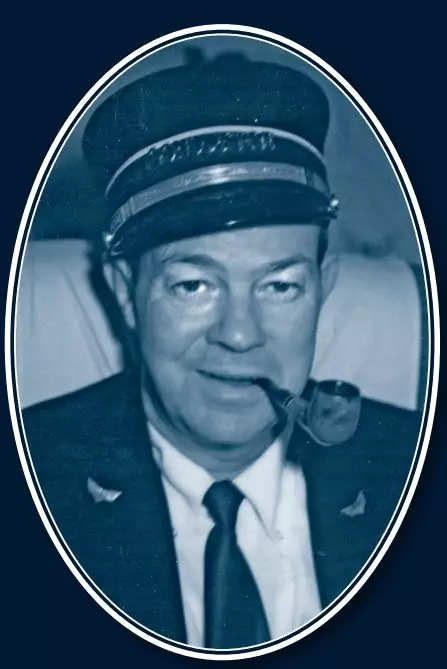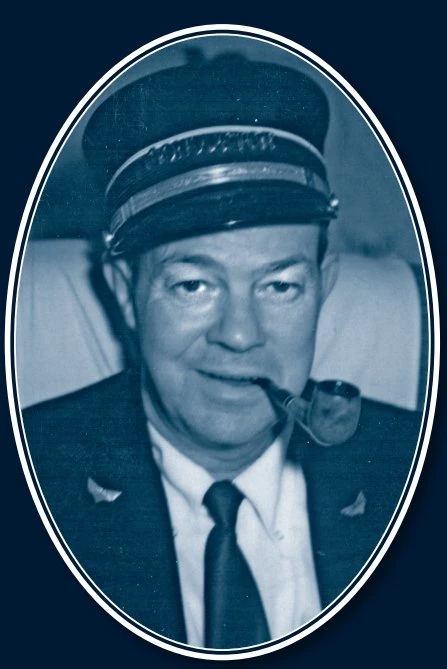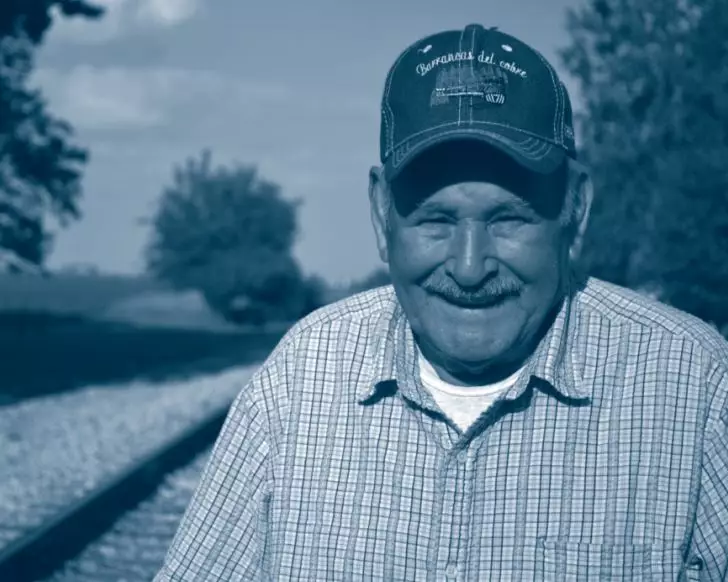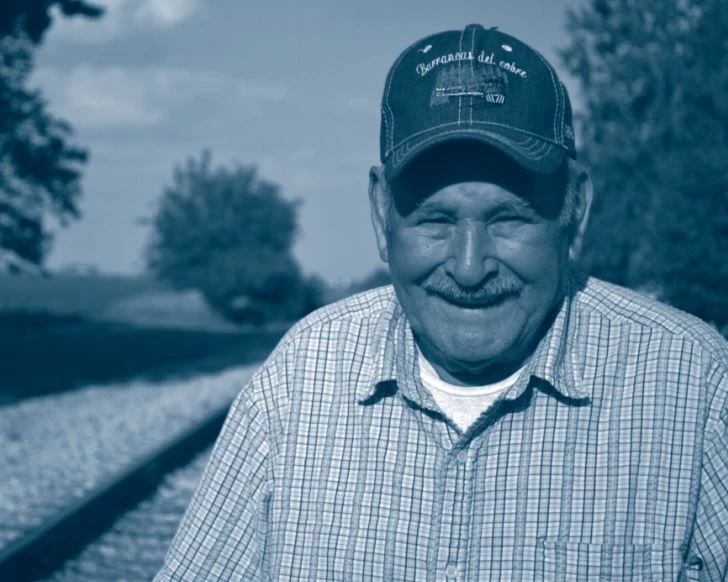Diesel Engines Replace Steam Engines
The merger of the Chicago & Alton and Gulf, Mobile & Ohio (GM&O) railroads in 1946, and the switch from steam engines to diesel engines, dramatically reduced employment at Bloomington’s shops. Employment dwindled from 1,200 in 1946 to 476 by 1950. The shops closed by 1972.Featuring:Ralph D.W. Gapen, (1919 – 1991), C&A brakemanDomingo Carranza, (1931 – 2019), C&A section handRalph D.W. Gapen’s (1919-1991) first job was a mechanic for Bloomington’s Barker Motor Company, but WWII military service interrupted his employment. When he returned Ralph became a brakeman for the C&A RR. The lowest ranked member of the train’s crew, Ralph’s work involved assisting the conductor, inspecting the train, and pulling switches that allowed trains to move from one track to another.
Brakemen like Ralph connected or “coupled” railcars together. This included connecting brake hoses. Avoiding slips or falls was imperative, as they could result in serious injuries, especially when cars were being connected.
As a brakeman, Ralph also checked the wheel bearing boxes on each railcar.
Journal hook, circa 1940

View this object in Matterport
Using a journal hook like this one to open them, he made sure there was enough oil and cotton packing. If bearings were not lubricated and packed properly, the friction of metal on metal could start a fire. The resulting heat could bend the metal and derail the car. In the 1960s frictionless bearings replaced this system.
Donated by: Mrs. Dale Huber
858.521

If you worked the most dangerous job on the railroad, how long would you stay in that job?
What would motivate you to leave?
Ralph continued as a brakeman until around 1950, when he became a passenger train conductor for the GM&O Railroad. In this new position Ralph acted as the manager of the train. He dealt with paperwork and was expected to know the destination of his passengers and any mail or other items loaded onto his train. He also oversaw porters, who handled passengers’ luggage. At departure time he surveyed the boarding area, shouted "All aboard," stepped onto the train, and then signaled the engineer that the train was ready to go. He then walked the train, punched the passengers’ tickets, and made sure his counts were accurate.
Passenger train ridership began to decline after WWII as more people chose to travel by automobile on their own time, rather than by train schedules.
In 1970 Congress passed the Rail Passenger Service Act, which created Amtrak — a private company that managed a nationwide rail system dedicated to passenger service. When Amtrak service began, most other railroads eliminated passenger service.
Ralph transferred to Amtrak and worked for the company as a conductor until his retirement in 1980.
Until 1965 Domingo Carranza (1931-2019) crossed the Mexican border frequently as a campesino (farm worker) under the Bracero program (1942-1964), which allowed Mexican workers legal access into the U.S. (He did not know that he was already a U.S. citizen.) But that year Domingo stopped picking cotton, tomatoes, and other crops and began work as a section hand for the Toledo, Peoria & Western Railroad (TP&W RR). He worked that summer “pulling spikes,” as the railroad laid down new rails westward from Forrest to East Peoria.
Domingo returned the next year as a permanent section hand and worked with a crew of four others to maintain the track from Forrest to East Peoria. Working year-round, they cleared frozen switches and tracks in the winter, and in warmer weather replaced and maintained ties and rails. One winter severe weather closed the roads, but Domingo still got to work — a freight train stopped on the track two houses down from his home, picked him up, and took him to work.
The eight-hour day and steady pay allowed him to move his family from Mexico and to settle in Chenoa.
In 1986 Domingo injured his back on the job and could no longer work.
What might have happened to him and his family?
Fortunately Domingo was a member of the Brotherhood of Maintenance of Way Employees. He was financially compensated for his injury and was able to retire.
Hard hat, pickaxe, spike maul, and tie tongs
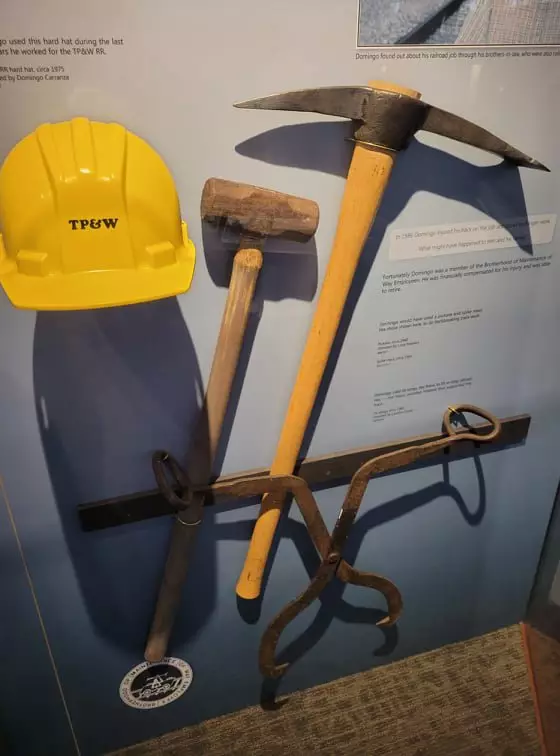
View this object in Matterport
Domingo would have used a pickaxe and spike maul, like those shown here, to do backbreaking track work. Domingo used this hard hat during the last few years he worked for the TP&W RR.
Circa 1975 (hard hat), 1940 (pickaxe and spike maul), 1960 (tie tongs)
Donated by: Louis Masters (pickaxe and spike maul), Domingo Carranza (hard hat), Carolyn Cruser (tie tongs)
2017.30, 888.917, 2011.071.1, 2013.4.60
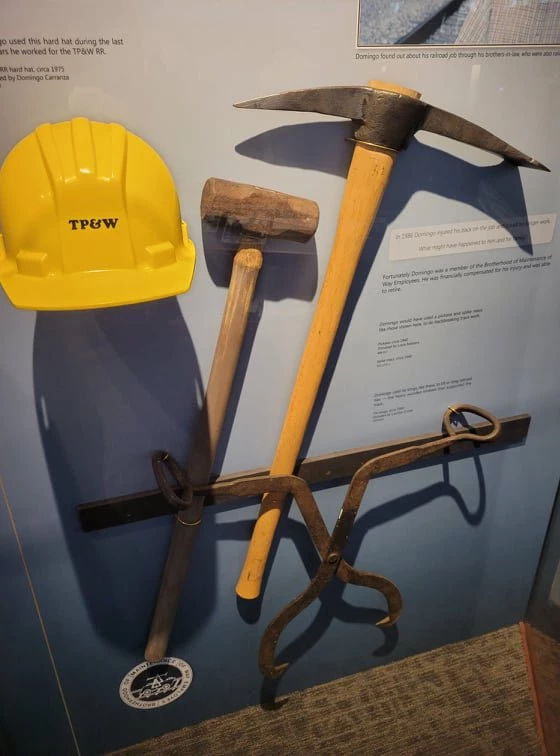
When the Chicago & Alton Railroad shops opened in 1854 it was the beginning of an era of growth and prosperity in McLean County.
Ninety-two years later, in 1946, the GM&O Railroad took over the shops and railyard. By then new technologies had already started to reduce the impact of the shops on the community and its work force.
When the shops closed in 1972 it signaled the end of an era.
When the shops closed they were, for the most part, abandoned by the GM&O RR. Nine years later Bloomington native and professional photographer, Earl Dunbar, photographed the once bustling shops, which by 1981 looked like a ghost town.
 Making a Home
Making a Home
 A Community in Conflict
A Community in Conflict
 Working for a Living
Working for a Living
 Farming in the Great Corn Belt
Farming in the Great Corn Belt
 Abraham Lincoln in McLean County
Abraham Lincoln in McLean County
